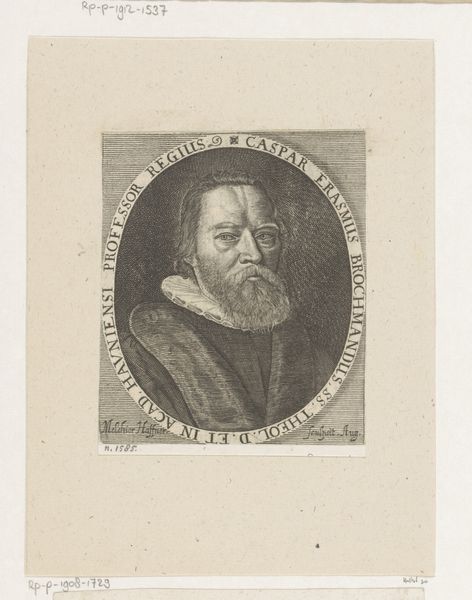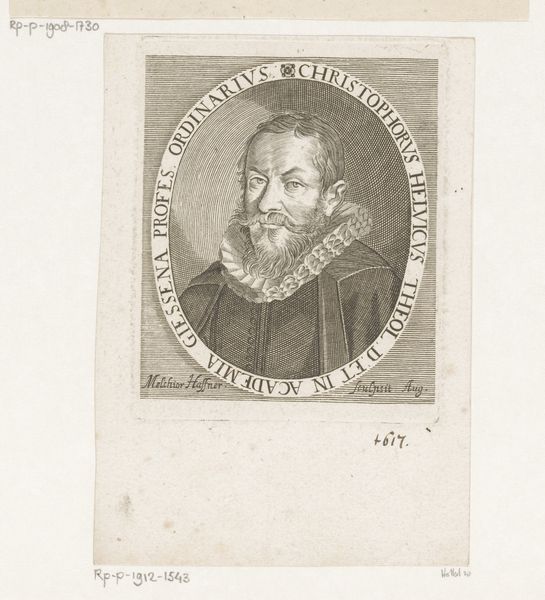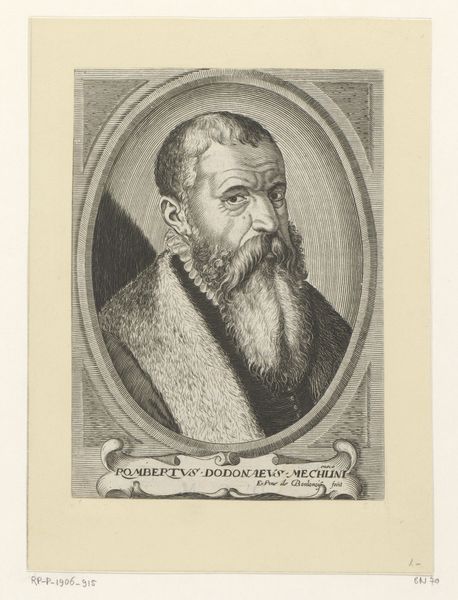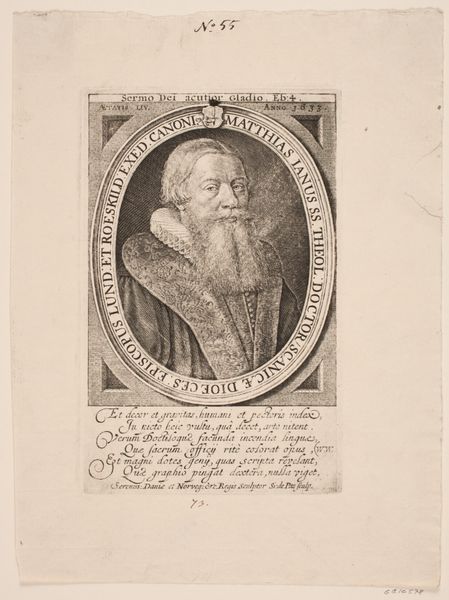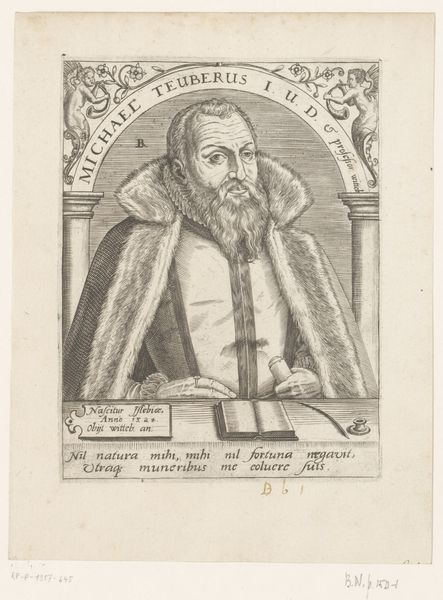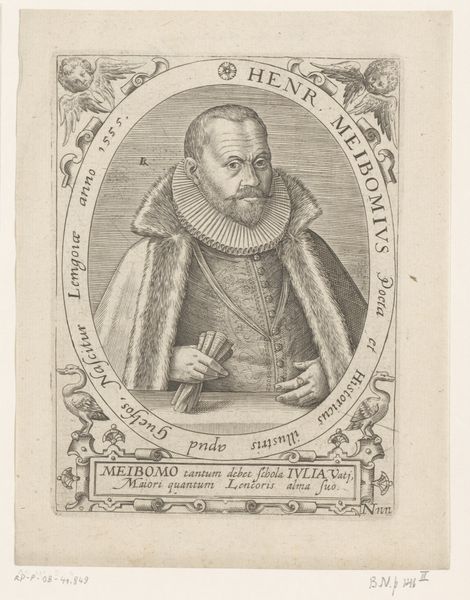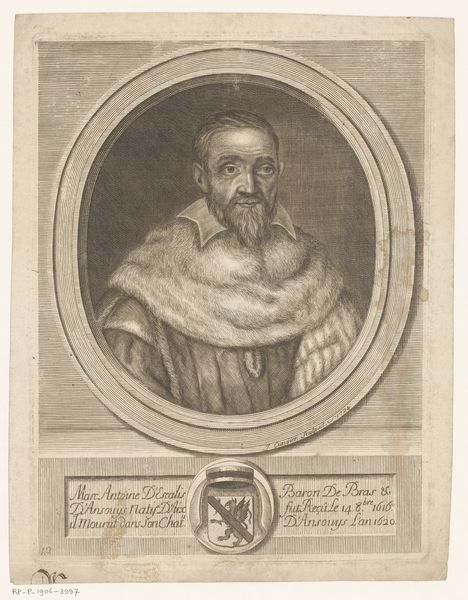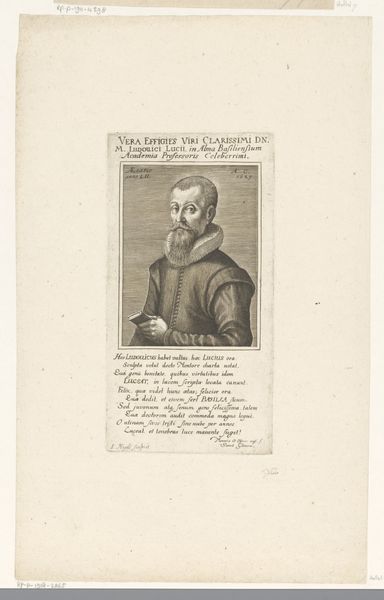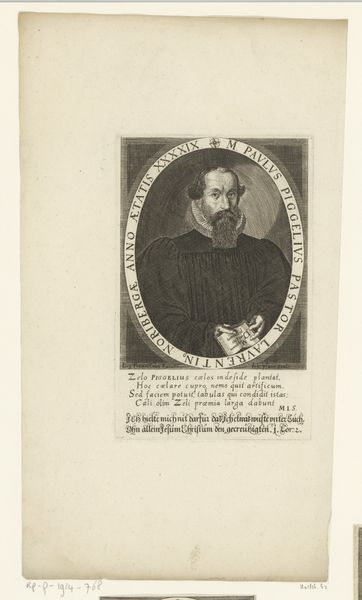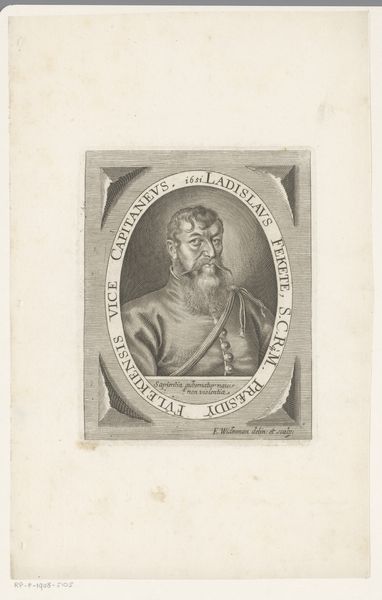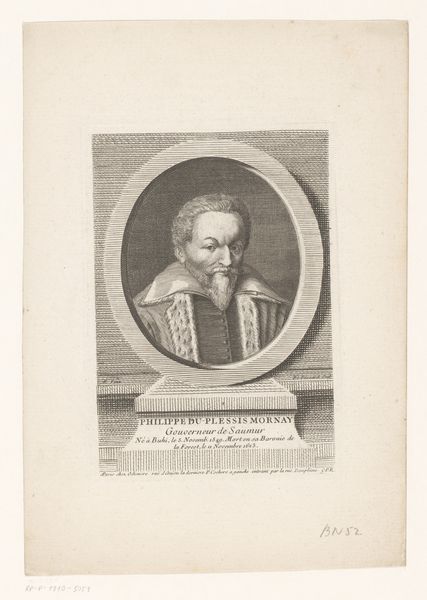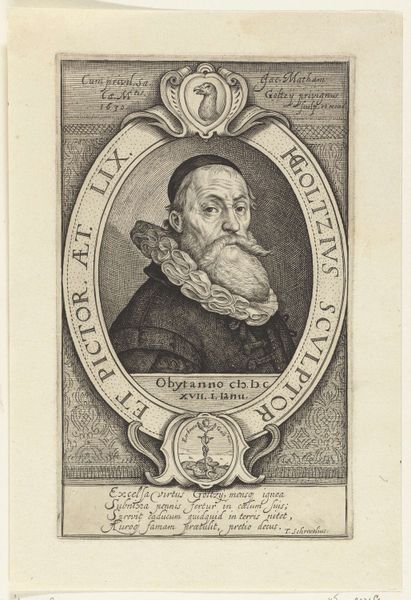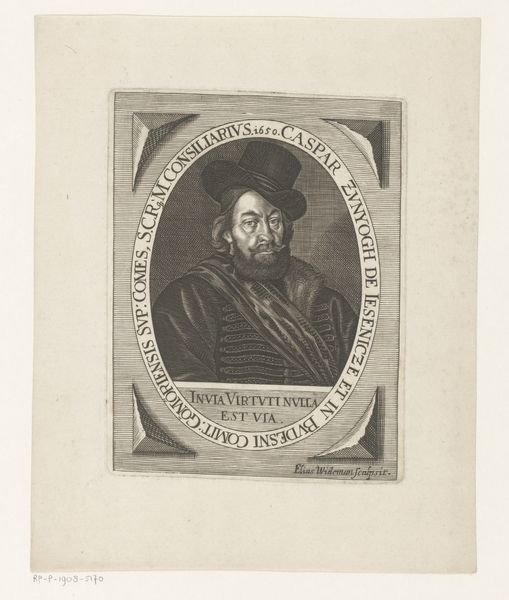
engraving
#
portrait
#
baroque
#
old engraving style
#
history-painting
#
engraving
Dimensions: height 80 mm, width 78 mm
Copyright: Rijks Museum: Open Domain
Curator: Here we have Thomas Hirschmann's "Portret van Georg Rupprecht," an engraving dating back to 1683. Editor: The intricacy of the lines is astounding. The portrait feels formal and a little austere. The textures, especially in the beard and the drapery, are incredibly detailed for an engraving. How would you interpret this work, focusing on its formal qualities? Curator: Let us analyze the composition. Note how Hirschmann utilizes line to create depth and shadow. Observe the contrasting densities of line – heavier to define the face and beard, lighter to suggest the folds of his clothing and the inscription around the portrait. This contrast creates visual interest. The oval border serves to contain the figure, creating a sense of defined space. Do you find that this containment draws the viewer’s eye towards Rupprecht's face, making him the central focus? Editor: Yes, the tight framing really forces you to engage with his gaze. The way the lines converge seems calculated to emphasize his presence. Is there any deeper meaning in how he positioned the text? Curator: Precisely! The carefully rendered lines, textures, and shapes combine to give us the essence of Rupprecht. Hirschmann's deliberate choices in rendering form through line and shadow, along with text, show the balance between figure and text in service of constructing an idealized representation of Rupprecht. Editor: I never thought about an engraving in terms of visual weight and balance, but the framing and details definitely support a visual hierarchy. Curator: Precisely. Approaching a work from this angle helps to unlock the language of form and appreciate the artistry behind even seemingly straightforward portraits.
Comments
No comments
Be the first to comment and join the conversation on the ultimate creative platform.
